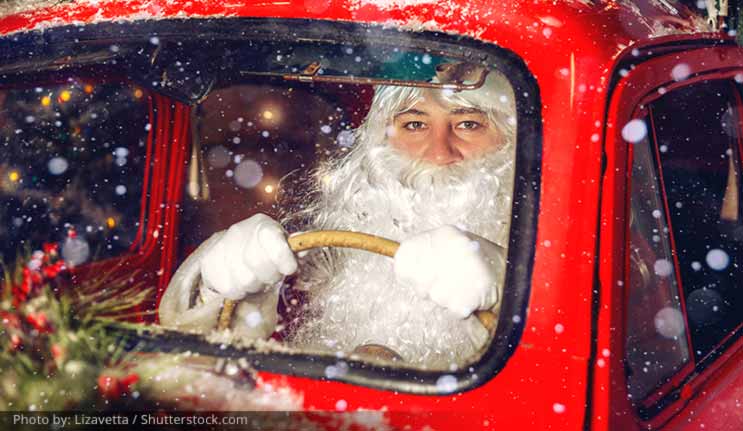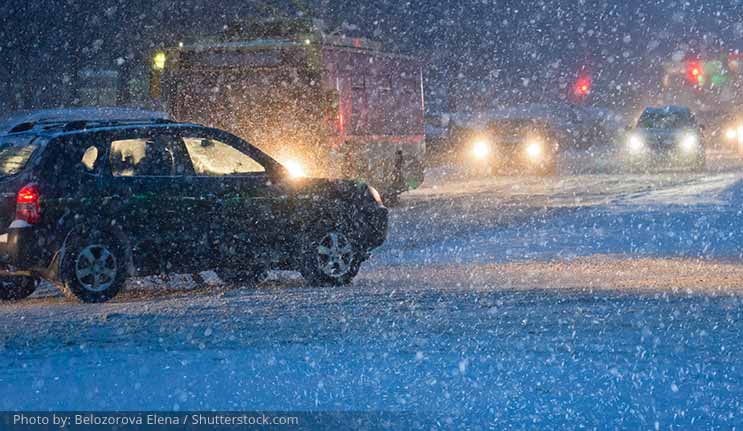It’s been a tough few weeks, but you finally handed in your last report, picked up some Christmas gifts and packed family, dog and grandmother’s gravy recipe into the car. Now it’s only a six-hour drive and then you’re ready to spend the holidays with the in-laws. If you can push yourself through these next several hours, you’ll be in a warm bed by 1 AM. 2.30 AM, if there’s snow.
Does this sound familiar? I can almost physically feel the exhaustion of this driver in a few hours, when the rest of the family is asleep, the pre-holiday tension is starting to let go and he or she is alone with the dark, long and boring road. I remember some excruciating late-night drives myself, and I’m not alone.
Some 60% of drivers or about 168 million people admit to having driven a motor vehicle while feeling drowsy in the past year, according to a National Sleep Foundation poll. More than a third of drivers said they had fallen asleep at least once while driving. Of these, 13% said they had done so once a month.
Drowsy driving is one of the four D’s, right up there with drunk, drugged and distracted. All of these are dangerous and particularly common around the holidays.
It is not possible to give an exact figure of how many accidents are caused by driver drowsiness–many times the driver won’t even realize that was what caused the incident and there is no test to take to establish fatigue. However, the National Highway Traffic Safety Administration estimates that driver fatigue leads to at least 100,000 crashes annually. They result in some 1,550 deaths and 71,000 injuries per year on top of $12.5 billion in monetary losses.
But because it’s so difficult to establish a figure, this may be a conservative assessment. Other studies paint a darker picture. The AAA Foundation for Traffic Safety estimated that over the course of a year, more than 5,000 people die in crashes linked to drowsy driving, while the 2009 Massachusetts Special Commission on Drowsy Driving put the figure at 8,000 lives lost per year.
What can you do to prevent drowsy driving?
The simplest answers are often the best: Get enough sleep. I know, it’s easier said than done, especially in December. But keeping good sleeping habits is crucial to avoid nodding off at the wheel, according to the Centre for Disease Control and Prevention (CDC). Most adults should get at least 7 hours of sleep per day and teens need a minimum of 8 hours.
If you have symptoms of a sleep disorder, discuss this with a doctor. If you take medication that can make you sleepy, don’t drive afterwards.
Apart from these physical reasons, your work can also move you into the danger zone. Drowsy driving is common among commercial drivers and people working shifts, particularly night or long shifts, according to the CDC.
But if you haven’t had enough sleep and you are behind the wheel, there are still things you can do. First off, pay attention to the warning signs. These include yawning or blinking frequently, forgetting the past few miles, missing your exit, drifting from your lane and hitting a rumble strip on the side of the road, as listed by the CDC.
If you notice these signs, pull over and take a 15-20-minute nap or change drivers. If you’re a passenger and you see that the driver is getting sleepy, don’t be shy to bring this up and suggest a break or that you take over. In the end, everybody’s happier to arrive safe and sound.
Planning to take regular breaks every two hours, for example, is another good way of thinking ahead.
What about coffee? If you pull over, grab one or two cups of coffee, and take a 20-minute nap, you will become more alert, according to the National Highway Traffic Safety Administration (NHTSA). However, this is only temporary and is no substitute for decent, regular sleep. Covering up your fatigue with coffee still involves the risk of “micro sleeps,” which means brief losses of consciousness of about 4-5 seconds–enough to cause a crash.
What does drowsy driving look like?
Crashes related to drowsy driving are more common between midnight and 6 AM or in the late-afternoon. This is linked to a dip in your circadian rhythm, which regulates sleep, according to the NHTSA. These accidents often occur on rural roads and highways – places where you are not forced to constantly pay attention to traffic.
A lot of drowsy-driving crashes involve only a single vehicle, unaccompanied drivers and running off the road at high speeds with no evidence of braking.
If you are drowsy, you won’t be able to pay attention to the road in the manner that you should. On top of this, your reaction time will be slower and your ability to make good decisions won’t be at its best, a report in the journal Accident Analysis & Prevention found.
Drowsy driving actually has quite a few things in common with drunk driving, according to the National Sleep Foundation. If you are awake for 18 hours, you will drive like you would if you had a blood alcohol level of .05%. If you have stayed up for 24 consecutive hours, that number climbs to .10%, which is above the legal limit of .08%. However, while a driver who has had some drinks may try to drive slowly, the sleepy one can nod off while going fast.
As a final word before getting back to your holiday rush: Whatever you do, don’t add more D’s to the mix. Consuming alcohol will only make you drowsier by the time you get behind the wheel.
About the Author
Eva Nyman grew up in Finland, but has lived in Belgium, France and Hungary. She holds a degree in journalism and communication from the University of Helsinki and has worked as a reporter for ten years. She feeds her fascination with history and current affairs with books and her love of nature with hikes. She’s passionate about traveling, particularly slow journeys, and her dream is to visit every corner of the world.
Protect your employees with these training courses on driver safety:
Extreme Driving Conditions – Large Vehicles
Defensive Driving – Small Vehicles
Defensive Driving – Large Vehicles
Speeding Awareness – Small Vehicles












